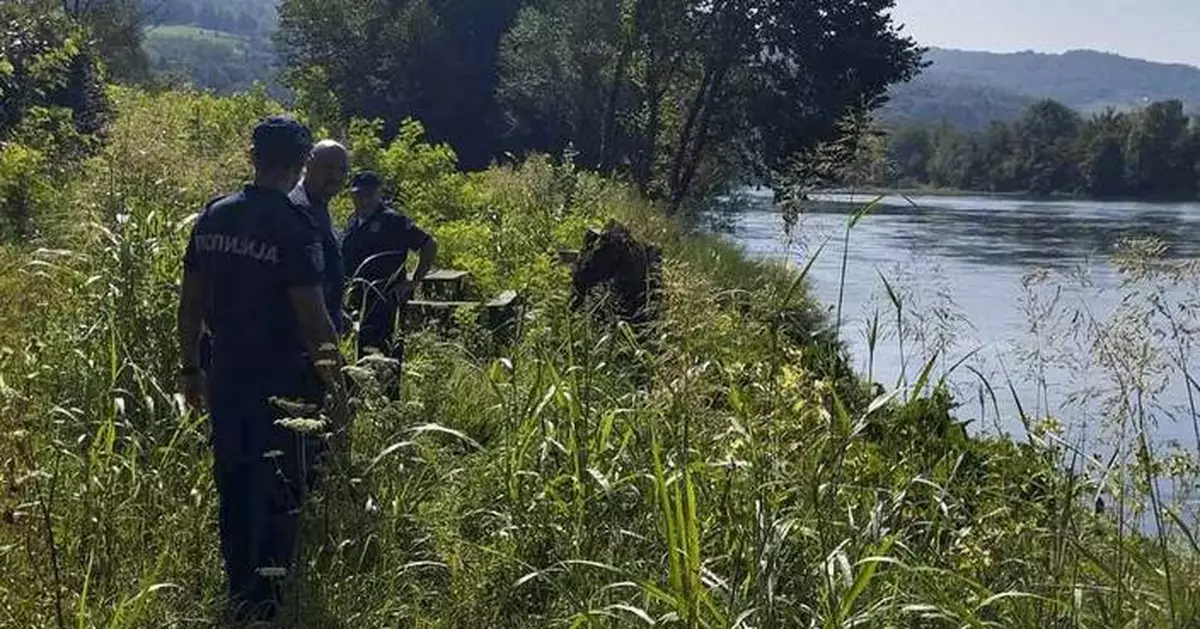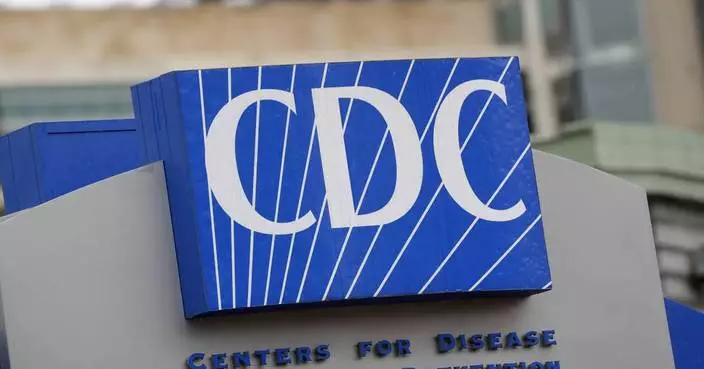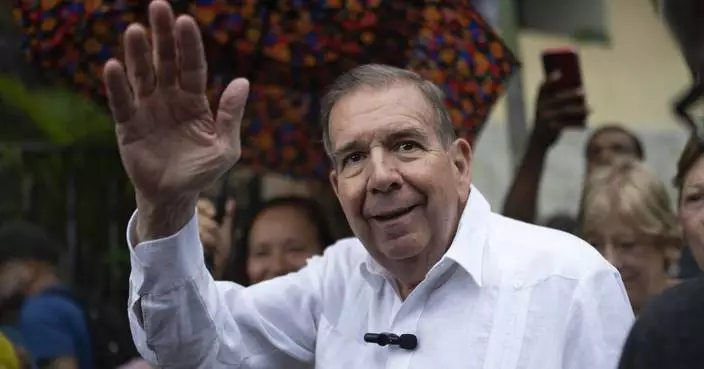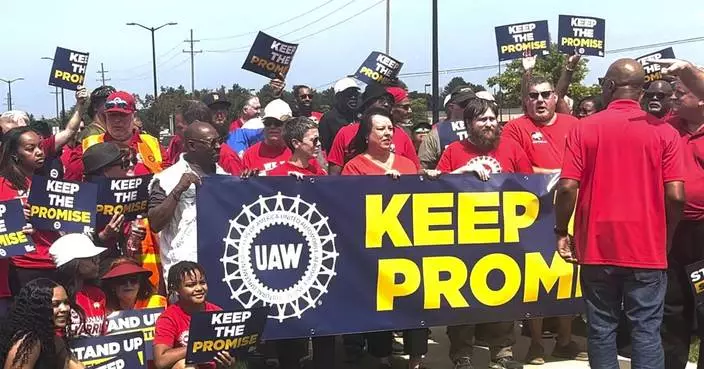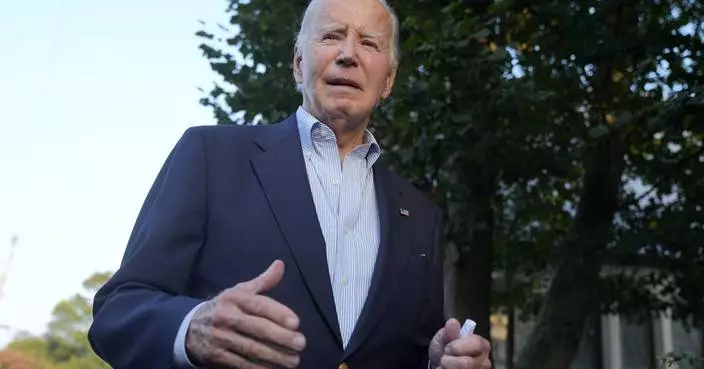BRATUNAC, Bosnia-Herzegovina (AP) — A boat carrying migrants from the Middle East overturned while crossing the Drina River from Serbia to Bosnia, drowning at least 10 people, officials in the two Balkan countries said Thursday.
Serbian police received a call around 5 a.m. from their counterparts in Bosnia and a citizen who reported the accident, said Interior Minister Ivica Dacic.
Dacic initially said 18 migrants, including three children, managed to cross into Bosnia, out of 25 people who were in the boat when it overturned. But he later said the number of victims had reached 10, suggesting there might have been more migrants in the boat when it capsized.
“The lifeless body of a baby that is about nine months old has been found,” said Dacic. “The baby was with its mother whose body was pulled out of the river earlier today.”
“Police and rescuers are continuing a further search of the Drina river and the surrounding terrain,” said Dacic in a statement.
Out of 18 migrants who made it to shore, 16 are from Syria and two are from Egypt, Dacic said. Ten of them are minors.
Bosnian emergency official Boris Trninic said earlier there were about 30 people in the boat, 15 of whom reached safety.
It was not immediately possible to confirm the exact number of people on the vessel.
Migrants using the so-called Balkan land route in their efforts to reach Western Europe come to Serbia from Bulgaria or North Macedonia before moving on to Hungary, Croatia or Bosnia.
To reach wealthy European countries, people fleeing wars and poverty often turn to people smugglers to take them across borders without authorization.
Follow AP migration coverage at: https://apnews.com/hub/migration
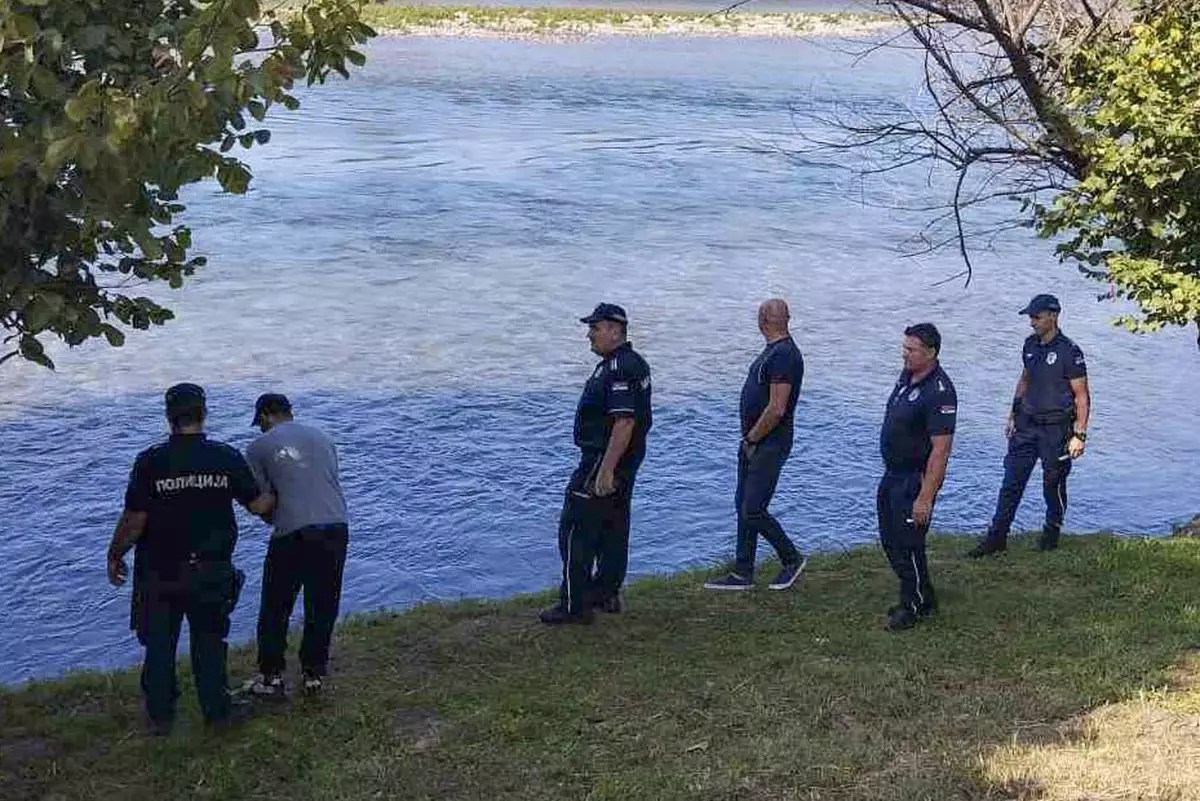
In this photograph made available by the Serbian Ministry of Interior, Serbian Police officers search a bank of the Drina River near the town of Ljubovija, Serbia, Thursday, Aug. 22, 2024. (Serbian Ministry of Interior via AP)
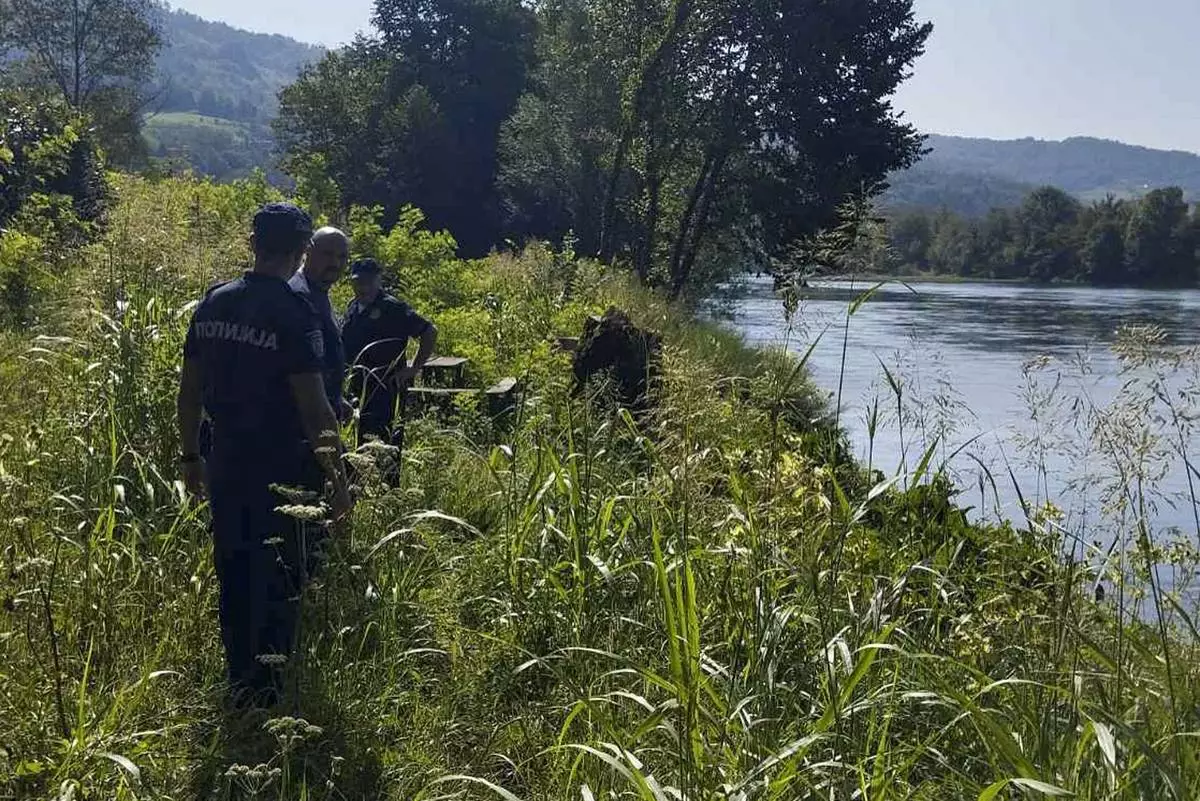
In this photograph made available by the Serbian Ministry of Interior, Serbian Police officers search a bank of the Drina River near the town of Ljubovija, Serbia, Thursday, Aug. 22, 2024. (Serbian Ministry of Interior via AP)
CAPE TOWN, South Africa (AP) — Conflict is likely among partners in South Africa's new coalition government but that won't be “catastrophic” for its hopes of turning around the country, the leader of the second biggest political party said Thursday.
John Steenhuisen's Democratic Alliance joined a coalition government led by the long-ruling African National Congress against all expectations after May's national election, making staunch foes from either side of the South African political spectrum partners in government.
Analysts predicted it would be a difficult working relationship — and Steenhuisen called it “a marriage of inconvenience” for Africa's most advanced economy, which is burdened by problems of poverty, inequality, unemployment and failing state-run businesses.
Steenhuisen said that there would likely be many moments of disagreement between his center-right DA and the left-leaning ANC over the next five years of the parliamentary term to end South Africa's “deep crisis,” and that should be accepted.
“Conflict over policy ... is not necessarily an existential threat to the government," Steenhuisen said in a lunchtime speech to a largely elderly audience at a plush sports club in Cape Town. “There will be conflict. There will be differences in policy.”
The ANC and the DA came together along with eight other smaller parties to form what's been called a government of national unity after weeks of painstaking negotiations following the May 29 election. The historic agreement was brokered after the long-dominant ANC lost its parliamentary majority for the first time since the end of the apartheid system of racial segregation in 1994, forcing it to find coalition partners to stay in government. It put South Africa in uncharted political waters.
The coalition government was finally formed at the end of June and faces the challenge of reigning in South Africa's desperate unemployment rate of 32%, the highest in the world outside of a war zone. South Africa's economy has hardly grown over the last decade, and Steenhuisen, the former main opposition leader who is now the minister of agriculture, said his party had a singular focus on those issues in government.
“Economic growth and job creation. Growth and jobs. Me and my party are not going to let anything get in the way of that,” he said.
The conflict Steenhuisen spoke of between the DA and ANC could be seen on Friday if President Cyril Ramaphosa, the ANC leader, signs an education bill into law that the DA is strongly opposed to, as Ramaphosa has said he will.
Steenhuisen said his party would take the government it is part of to court over the law if Ramaphosa signs it and accused the ANC of “riding roughshod” over its coalition partners.
The DA is also deeply opposed to a national health law that was introduced before the election that will effectively make the government the sole procurer of healthcare. Critics, including the DA, say it will wipe out the private healthcare business instead of improving public healthcare. The DA is also committed to challenging that in court, Steenhuisen said, another issue where the two main parties that hold the fate of the coalition are at loggerheads.
But Steenhuisen said there was also “a long list” of policies the ANC and DA have agreed on in the 2 1/2 months since the coalition government was formed, mostly with regards to reforming an economy that is meant to be a leader in Africa and for the wider developing world but had just 1.9% GDP growth in 2022 and 0.6% last year.
Steenhuisen said Ramaphosa and the ANC had “no better ally than the Democratic Alliance" when it came to economic reforms that would create jobs and fight poverty.
AP Africa news: https://apnews.com/hub/africa
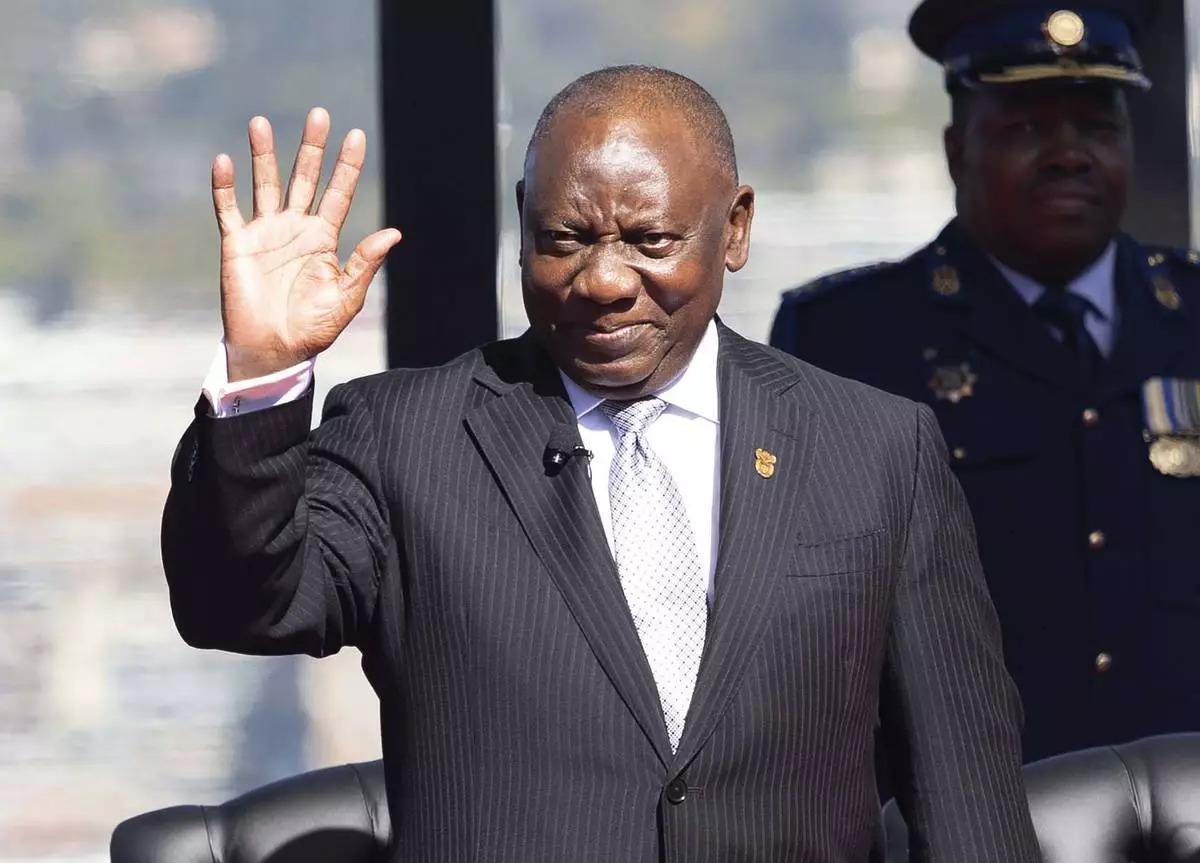
FILE - Cyril Ramaphosa waves as he arrives ahead of his inauguration as President, at the Union Buildings in Tshwane, South Africa, June 19, 2024. (Kim Ludbrook/Pool Photo via AP, File)

FILE - Main opposition Democratic Alliance (DA) party leader, John Steenhuisen, delivers his speech at a final election rally in Benoni, South Africa, May 26, 2024. (AP Photo/Themba Hadebe, File)




